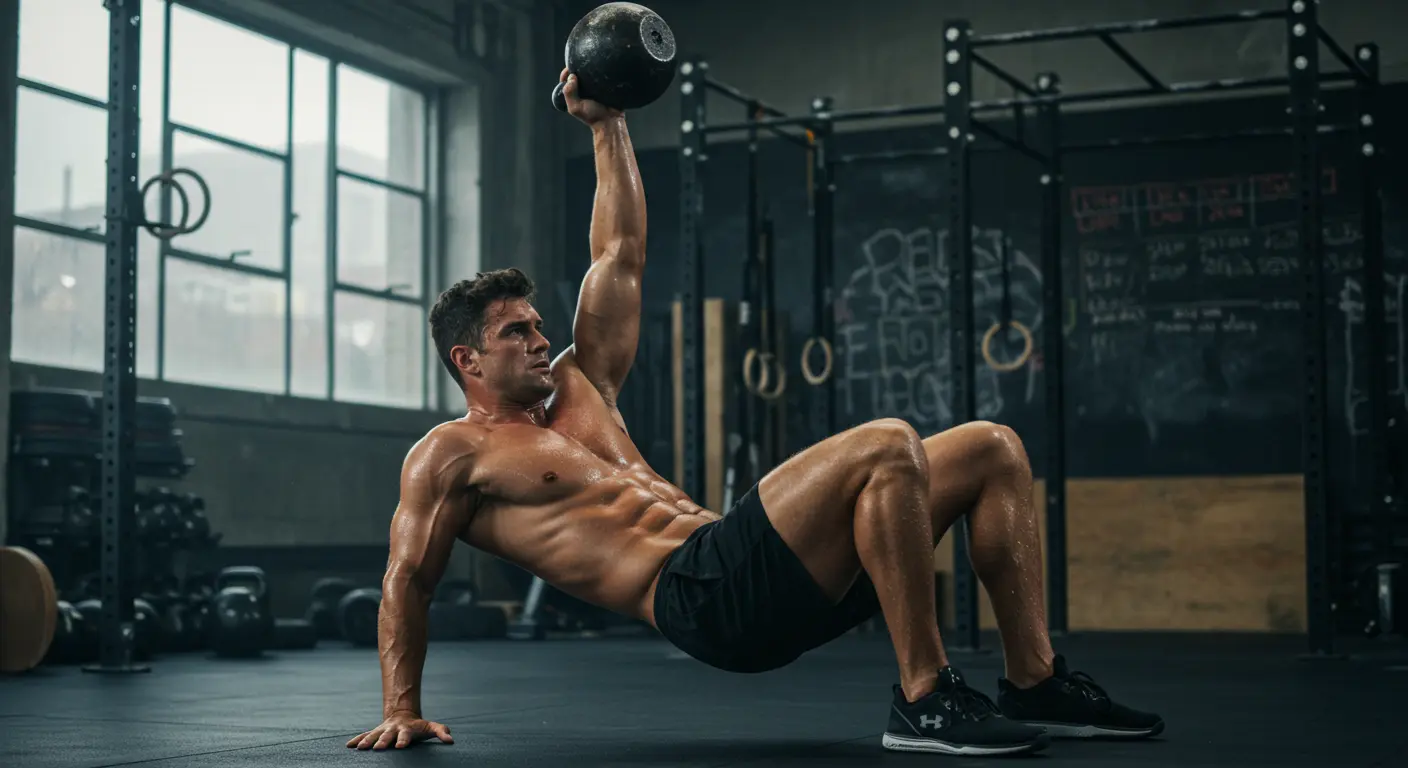Why Kettlebells Are Taking Over Fitness
If you’ve ever walked into a gym and seen someone swinging a cannonball with a handle like it’s a medieval weapon, you’ve witnessed kettlebell training in action. Once a niche tool, kettlebells have exploded in popularity—and for good reason.
They’re versatile, efficient, and deliver results that traditional weights often can’t match. But does kettlebell training actually build strength? Spoiler: Absolutely. Let’s dive into why this dynamic tool deserves a spot in your routine.
Kettlebells vs. Traditional Weights: What’s the Difference?
Before we get into the nitty-gritty, let’s clear up a common question: Why choose kettlebells over dumbbells or barbells? The answer lies in their design and the way they challenge your body.

1. The Shape Matters
Kettlebells have an offset center of gravity—the weight isn’t evenly distributed like a dumbbell. This forces your muscles to work harder to stabilize the load, engaging your core, grip, and stabilizer muscles in ways traditional weights can’t .
2. Movement Patterns
Barbells and dumbbells excel at linear, isolated movements (think bicep curls or bench presses). Kettlebells, on the other hand, thrive in multi-planar movements—think swings, cleans, and Turkish get-ups. These exercises mimic real-world activities like lifting groceries or shoveling snow, making them inherently functional .
3. Strength + Cardio, All in One
Kettlebell swings aren’t just for building power—they’re also a cardio powerhouse. Studies show that a 20-minute kettlebell session can burn up to 400 calories, rivaling a 6-minute-mile run . This dual benefit makes them ideal for time-crunched athletes.
The Science of Kettlebell Strength
Let’s geek out for a moment. Research reveals some compelling insights:
- A 12-week study on obese adults found that kettlebell training significantly improved VO2 max (a measure of cardiovascular fitness) and reduced body fat by 10%, rivaling bodyweight training .
- Kettlebell swings activate the posterior chain—glutes, hamstrings, and lower back—more effectively than deadlifts, making them a powerhouse for explosive hip power .
- Unlike barbell training, which prioritizes muscle hypertrophy, kettlebells promote myofibrillar hypertrophy, increasing muscle density and functional strength without bulk .
Key Benefits of Kettlebell Training for Strength
Here’s why kettlebells are a game-changer:
1. Full-Body Conditioning
Every swing, clean, or snatch engages multiple muscle groups simultaneously. For example, the double kettlebell swing works your glutes, hamstrings, core, shoulders, and grip in one fluid motion . This efficiency means you’re building strength and endurance without isolating muscles.
2. Improved Grip Strength
The thick handle of a kettlebell forces your forearms and hands to work overtime. Exercises like farmer’s carries or cleans build a vice-like grip, which translates to better performance in deadlifts, pull-ups, and even daily tasks .
3. Core Stability and Power
Your core isn’t just your abs—it’s your body’s stabilizer. Kettlebell movements like Turkish get-ups or windmills demand constant core engagement to control the weight’s momentum. Over time, this builds a rock-solid midsection that protects your spine and enhances athletic performance .
4. Injury Prevention
By training in all planes of motion (forward, sideways, rotational), kettlebells strengthen often-neglected stabilizer muscles. This reduces imbalances and lowers injury risk, especially in the lower back and shoulders .
5. Time Efficiency
No time for a 90-minute gym session? A 20-minute kettlebell circuit can torch calories, build muscle, and boost endurance—all at once .
Kettlebells vs. Barbells: A Side-by-Side Comparison
To visualize the differences, let’s break it down:
| Aspect | Kettlebells | Barbells |
|---|---|---|
| Primary Focus | Functional strength, endurance, mobility | Maximal strength, muscle hypertrophy |
| Movement Patterns | Multi-planar, dynamic, ballistic | Linear, isolated, controlled |
| Muscle Engagement | Full-body, stabilizers, core | Targeted muscle groups |
| Cardio Benefits | High (e.g., swings = cardio + strength) | Low (requires separate cardio) |
| Skill Level | Moderate learning curve | Easier for beginners (simple lifts) |
| Best For | Athletes, busy professionals, rehab | Bodybuilders, powerlifters |
Sources: Precision Nutrition, BMC Sports Science
But Can Kettlebells Build Serious Muscle?
Here’s the kicker: Yes, but with caveats. Kettlebells won’t give you Arnold-sized biceps, but they excel at building lean, functional muscle. A study comparing kettlebell and barbell training found that while barbells produced greater strength gains (14% vs. 4% in squats), kettlebells improved power and coordination more effectively .
For hypertrophy, combine kettlebell training with barbell lifts. Use kettlebells for high-rep metabolic conditioning and barbells for heavy, low-rep sets.
Common Mistakes (and How to Avoid Them)
Kettlebells are safe—if you use proper form:
- Don’t Swing with Your Arms: Power comes from the hips, not the shoulders. Let momentum do the work .
- Start Light: A 16kg kettlebell is ideal for beginners. Master form before progressing .
- Warm Up: Mobilize your hips, shoulders, and thoracic spine to prevent strains .
How to Get Started
- Master the Basics: Begin with goblet squats, deadlifts, and two-handed swings.
- Progress to Flows: Combine movements like swing → clean → press for a seamless workout .
- Mix It Up: Add kettlebell circuits (e.g., 30 seconds work, 15 seconds rest) for cardio and strength.
Final Thoughts
Kettlebell training isn’t a fad—it’s a proven method for building strength, endurance, and resilience. Whether you’re a weekend warrior, a parent chasing toddlers, or an athlete looking to up your game, kettlebells offer a dynamic, efficient path to fitness. So grab a bell, swing with intention, and watch your strength soar.
Got questions? Drop them in the comments below! 🔔
FAQ
Can kettlebell training replace traditional weightlifting?
Kettlebells excel at building functional strength, endurance, and mobility, but they’re best paired with barbell or dumbbell training for maximal muscle growth. For a balanced routine, combine kettlebell workouts with heavy lifts like squats and deadlifts
How heavy should my kettlebell be for strength training?
Beginners should start with a 16kg (35lb) bell for foundational movements like swings and goblet squats. Advanced lifters often use 24kg (53lb) or heavier for explosive exercises. Always prioritize form over weight!
Can kettlebells help with weight loss?
Absolutely! High-intensity kettlebell workouts torch calories and boost metabolism. A 20-minute session can burn up to 400 calories. Pair training with a balanced diet for best results.
Are kettlebells safe for people with lower back pain?
Yes—if you maintain proper form. Focus on hip-hinging movements (like swings) and avoid rounding your spine. Consult a physical therapist first, and start with lighter weights.




